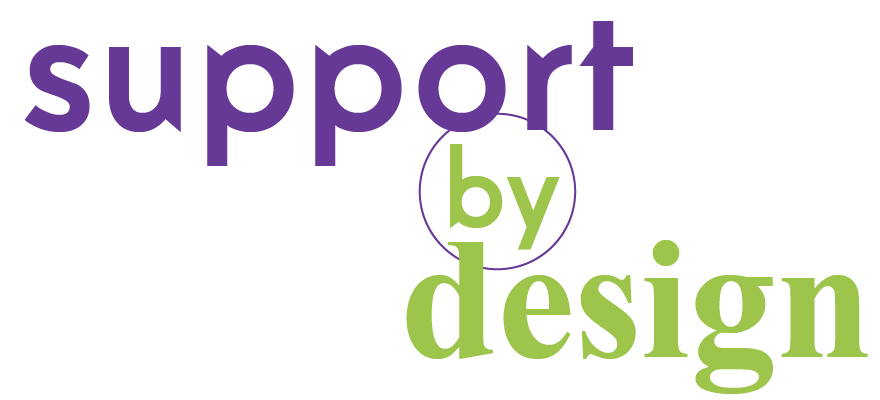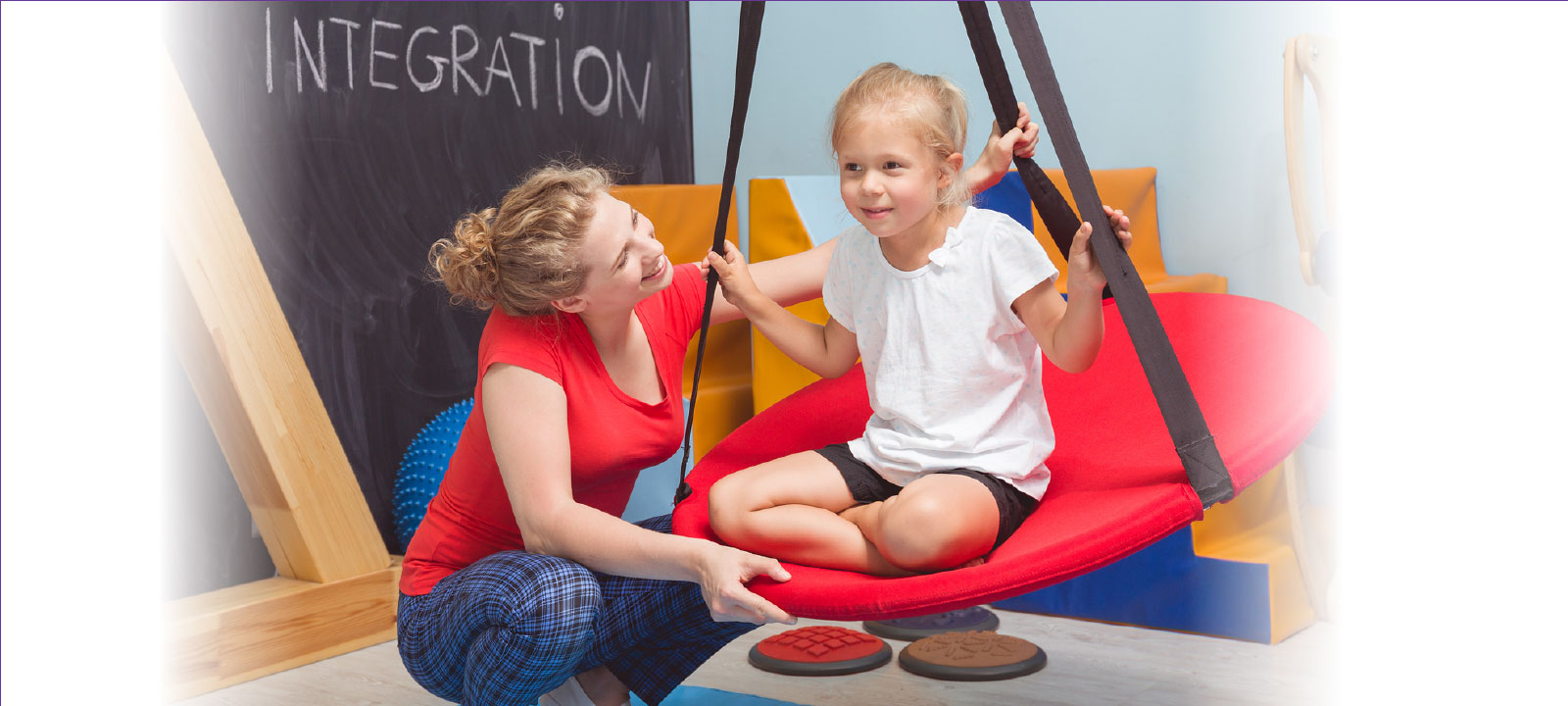Occupational therapy is the therapeutic use of self-care, work and play activities to increase independent function, enhance development and prevent disability, [and] may include adaptation of task or environment to achieve maximum independence and to enhance quality of life(AOTA, 1986).
Occupational therapists analyze how a child’s sensory, motor, perceptual and social-emotional functioning affect their ability to perform in their environment. They provide therapy activities to facilitate delayed areas, while collaborating with all other members of the therapy team (teachers, family, etc.) to facilitate a team approach. Occupational therapists can provide you with information, to help explain the impact of a particular condition, on your child’s abilities. We provide suggestions on how to modify your environment to facilitate optimal functioning. Occupational therapists can also recommend assistive devices as needed.
Sensory integration is an unconscious process of the brain. It occurs without us thinking about it- like breathing. It helps us organize information detected by our senses (taste, sight, hearing, touch, smell, movement, gravity, and position). It gives meaning to what we experience by sifting through all the information and selecting what to focus on (such as listening to a teacher and ignoring the noise of outside traffic). It allows us to act or respond to the situation we are experiencing in a purposeful manner (known as an adaptive response). Sensory integration forms the underlying foundation for academic learning and social behavior (Sensory Integration and the Child, A. Jean Ayres, 2005).
Our occupational therapists can help children:
- Improve writing and drawing skills.
- Improve strength and coordination.
- Improve fine motor and visual perceptual skills.
- Improve self–care skills.
- Assist with increasing overall internal organization, focus, and attention.
- Improve sensory motor processing abilities.
- Improve body and safety awareness.
- Improve ability to problem solve.
- Improve social skills/ play skills with peer.
- Improve coping skills and work behaviors.
Physical Therapy assists with improving a child’s functional independence (sitting, crawling, walking), strength, range of motion, and improving skills to allow the child to participate in age-appropriate roles or activities. These activities include community mobility, play with peers, and independence in activities of daily living.
Our physical therapists can help children:
- Improve motor planning and coordination.
- Improve balance.
- Improve overall strength.
- Improve overall endurance.
- Improve functional mobility (crawling, walking, running)
- Improve body and safety awareness.
- Improve ability to problem solve.
- Assist with increasing overall internal organization, focus, and attention.
Speech-language pathologists are professionally trained to prevent screen, identify, assess, diagnose, refer, provide intervention for, and counsel persons with, or who are at risk for, articulation, fluency, voice, language, communication, swallowing, and related disabilities. In addition to engaging in activities to reduce or prevent communication disabilities, speech-language pathologists also counsel and educate families or professionals about these disorders and their management. (ASHA, 1996c).
Our speech-language pathologists can help children:
- Improve receptive (comprehension) and expressive (verbal) language skills.
- Improve fluency.
- Improve social language/ play skills.
- Improve auditory processing skills.
- Improve oral-motor skills.
- Improve articulation/ phonology skills (speech intelligibility).
- Improve ability to problem solve.
- Improve voice (quality, pitch, loudness).
Linda Rowe, M.A.OTR,C.O. is a certified orthotist and licensed occupational therapist.
Orthoses are orthopedic devices used to support optimal body alignment. Many children with weakness, or who lack dynamic integrated muscle control, present with an imbalance of weightbearing distribution throughout their feet. Children with low muscle tone often have excessive pronation of their feet, having collapsed arches with a “rolling inward” foot position in weight bearing . Children may also present with toe walking, or other gait deviations. This causes a chain of imbalances throughout the body, which is directly impacting the child’s postural alignment, and body mechanics. This imbalance can develop into podiatric problems in the adult foot, and joint misalignments in other areas of the body (e.g. knees, spine, etc.). As we work hard to improved motor skills, we need to also address the first link of the chain – the FEET!
We provide specially designed orthoses with the goal in mind of least possible restriction of movement yet providing the support necessary to correct alignment. We use various orthotics supports including, but not limited to, arch supports, inframalleolar UCBL foot orthotics, and supra malleolar orthotics (SMO’s), and ankle foot orthotics (AFO’s). We use the popular SureSteps, Cascade DAFO’s, Sole Supports and Theratogs™ (an undergarment used to assist posture and motor control).
Support By Design would like to introduce Amy Kantor, a certified and licensed speech therapist with a specialty in feeding and swallowing disorders, difficulties and concerns. Amy is available to help diagnose and treat children with feeding issues. She has multiple years of experience working with children including the “picky eater” with atypical eating behaviors and food selectivity/refusal who experiences negative behavioral reactions to food, children with oral phase deficits and chewing difficulties, and children who present with a co-existing medical etiology resulting in problems with acceptance of certain solids and/or liquids, chewing problems, and/or swallowing complications.”
Amy is currently accepting new patients and is available for scheduling evaluation and treatment sessions.
What to Bring to the Feeding and Swallowing Evaluation
Please bring foods that your child typically eats for snack or lunch. As much as possible, include foods with different textures and consistencies such as pudding or yogurt, soft cookie or soft cooked food such as chicken nuggets, macaroni and cheese, etc. (easy to bite into and soft to chew solid foods), and chips or crackers (hard solid). Bring any liquid that your child typically drink enjoys drinking. Also, bring from home all the specific containers and utensils that your child typically uses (i.e. cup, straw, bottle, spoon, fork).
Also please do not give food or too much to drink too close to your appointment time. The initial assessment will be the most beneficial if your child is as hungry as possible so that the therapist can observe your child eating and drinking the foods and drink you bring.

